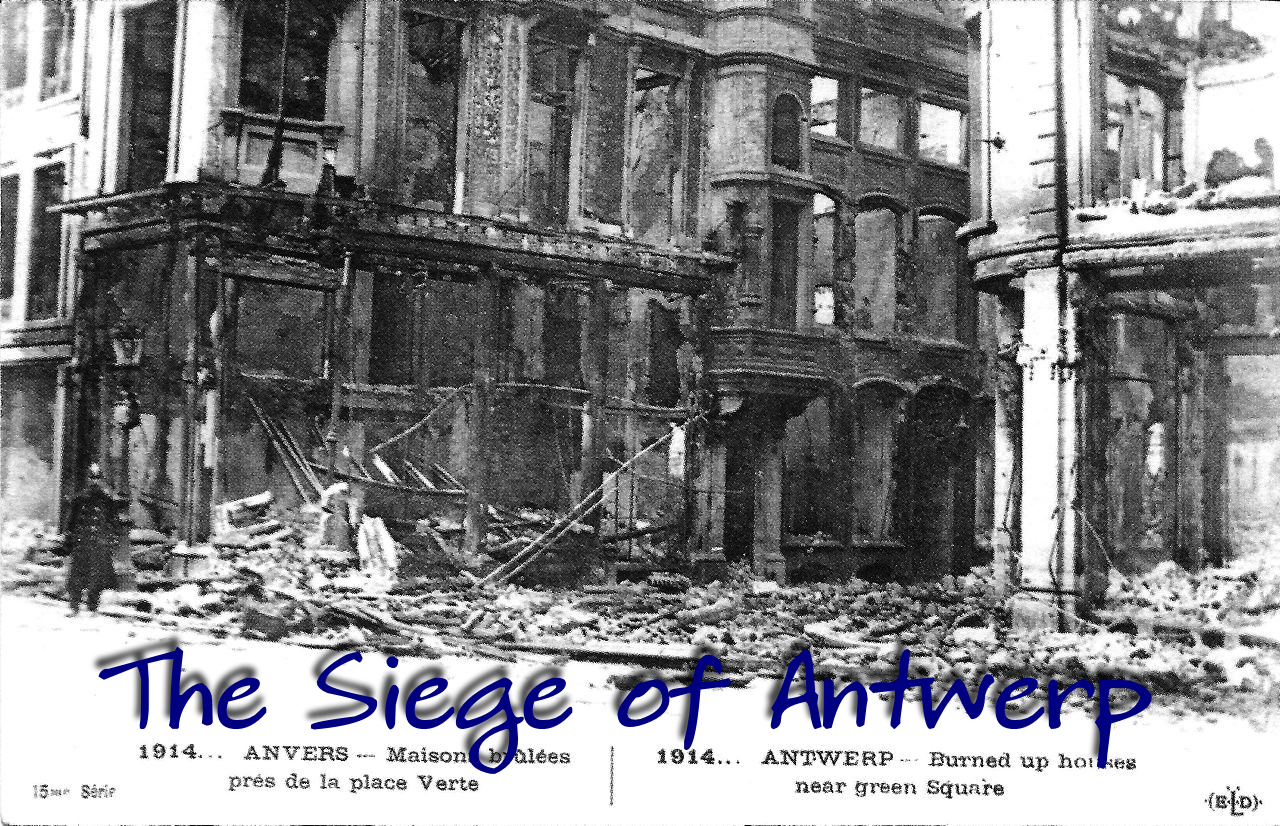
The Siege of Antwerp
After the Allied victory at the Battle of the Marne, the “Race to the Sea” had begun. Both sides were racing across France and Belgium, digging trenches and looking for the location of the next battle. During this time, the Belgian army, consisting of some 80,000 garrisoned troops, along with “a ring of 48 outer and inner forts” busied themselves by taking up defensive positions along the Yser River (Source). Their job was to distract the Germans.
The first to arrive were the Germans. On October 7, 1914, they bombarded Antwerp.
Now, initially, the Germans had no plans to even go through Antwerp, but all of the troops were proving to make their march through Belgium into France much more difficult. So, being forced to send four different divisions out to repel attacks from Antwerp, on September 9, the German Chief of Staff Helmuth von Moltke, sent his men to capture Antwerp.
On September 28, five German divisions, commanded by General Hans von Bessler, began bombing Antwerp’s southeastern corner. The British War Office was alerted, and, fearful that Germany’s capturing of Antwerp might mean a further conquest to take over the Channel ports, decided to send the British Expeditionary Force (BEF) troops in France to Antwerp.
[Below: Belgian Prisoners being marched away]

By October 2nd, word reached the likes of the First Lord of the Admiralty, Winston Churchill, that the Belgian forces under siege were planning to evacuate, leaving the city completely defenseless. Immediately, Churchill planned to get word to the Belgians that backup was on it’s way and then crossed the Channel himself.
In Antwerp, Churchill found the Belgians in terrible conditions. He reported back to Britain that “the Belgian troops were ‘weary and disheartened’ and that the city’s ground was so waterlogged that it was impossible for the Belgians to dig trenches for its protection” (Source).
By October 4th, the British had dispatched 6,000 Royal Navy troops. The following day, they sent another 2,000 and an additional 4,000 on the 6th. This on top of a division 22,000 strong that was already en route for Ostend.
“On October 7, before the British 7th Division had even set off, the Belgians transferred their forces from Antwerp to Ostend to continue the fight in open terrain” (Source). On the same day, the German onslaught began. The British were not able to withstand the bombardment.
The next day, Antwerp was evacuated; General Victor Deguise, Antwerp’s military governor, formally surrended to the German army on October 10. “German forces would occupy Antwerp for the duration of the war; it was finally liberated in late 1918” (Source).
Losses: The Allies suffered 30,000 casualties (most of which were captured). It is unknown how many German lives were lost.
[Below: Bombed Antwerp]

Up Next:
First Battle of Ypres

Your writing is as good as ever.